Built-in wardrobes in the toilet behind the toilet: varieties of models and manufacturing subtleties

The question of saving space in the bathroom / toilet arises from almost everyone who starts repairs or just wants comfort. It must be remembered that most often the wall behind the toilet is free, unless it is occupied by a boiler, and with a small area it is necessary to use the maximum free space. An excellent solution to this issue is a built-in wardrobe behind the toilet.
In addition to being able to close unsightly water pipes and meters, you can store towels, toilet paper, detergents and more there.
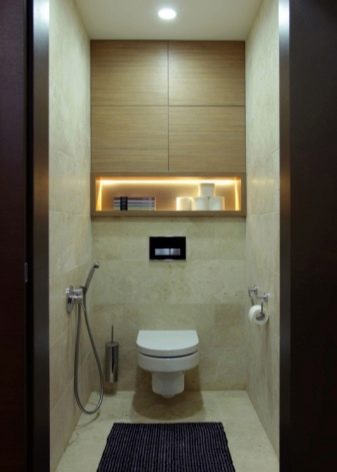
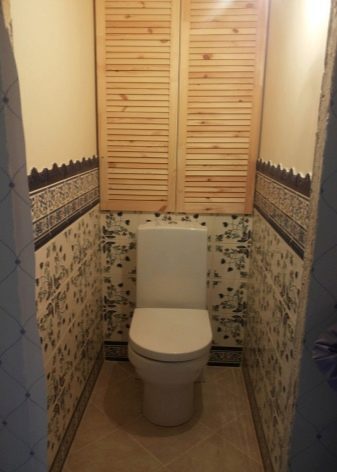
Dimensions and design
There are several options for such lockers:
- Ceiling to floor cabinet - good in terms of maximum access to communications, you can also install additional removable shelves inside it;
- Small hatch - it is intended to hide the meters, if the idea of using it for communications nevertheless arises, it is necessary to make sure of the condition of the pipelines;
- The average size (example: 50x70 cm) - provides access to the meter, makes it possible to install several shelves;
- Under the tiles - the size depends on the tile itself.
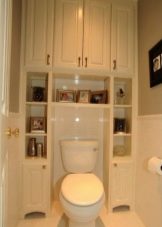
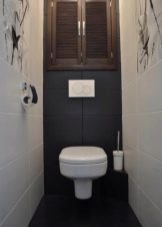
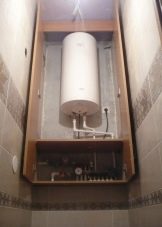

Types of structures
A variety of toilet cabinets allows you to use the free space behind the toilet as efficiently as possible:
- Wardrobe on legs - the basic requirement is that the width should not be larger than the barrel;
- Wall cabinet - it can be either built into the wall or hang over the toilet;
- Sanitary cabinet - one of the types of cabinet designed to hide pipes or installations for the toilet, providing easy access to appliances and equipment, you can also use it to store household items.
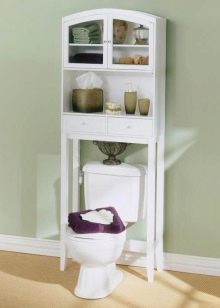
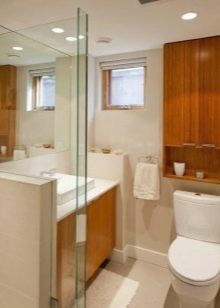
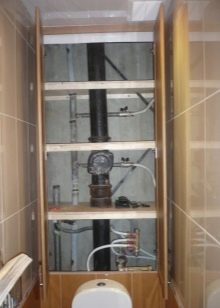
Manufacturing materials
The market provides a huge range of finishing and building materials. Therefore, it is important to make the right choice so that it is inexpensive, but at the same time of high quality. Various materials can be used to manufacture the structure.
- Drywall. This material is moisture resistant, and this is the main thing that you need to pay attention to. In case of unforeseen situations, from which no one can be insured (neighbors flooded, an accident with pipes), such a locker will not suffer, and after eliminating the reason, there will be no need to repair it. This type of cabinet can be decorated at will with mosaics, drawings, decoupage.
- Plywood - in terms of service life is less than the previous version, but cheaper.

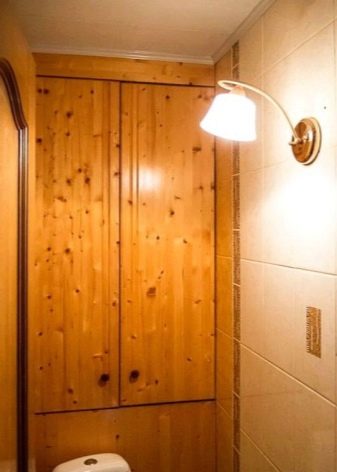
- Wood - the advantage of this type of material is that the shelves do not sag under the weight of tools and equipment. The main disadvantage: gradual rotting under the influence of moisture. When choosing a tree, you must first install a good ventilation system.
- Chipboard - it is good to use this material for cabinet doors if the ventilation is very good, since chipboard has a low moisture resistance.
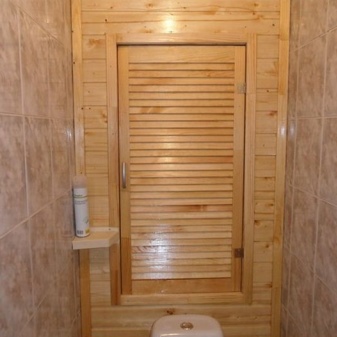
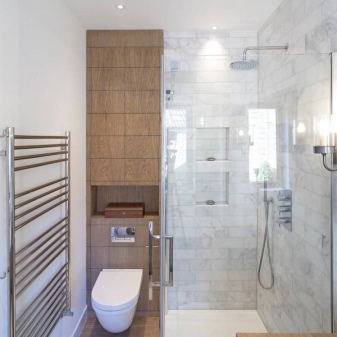
- Tile - is attached on a special frame, such a material is well suited for maintaining the design concept.
- Mirror - or the so-called mirror-cabinet is ideal for visually increasing the space, allows you to save on buying a separate mirror.This option is especially suitable if the toilet is located next to the sink.

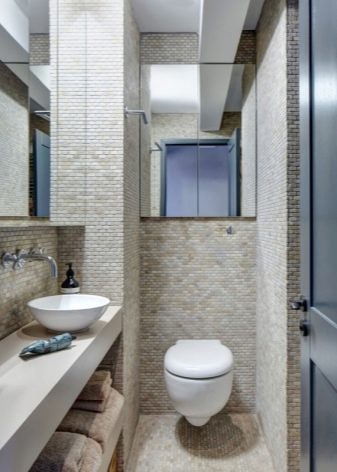
Features and Benefits
If it is clear with the material for the main structure, the question remains - if you make a closed type of cabinet in the toilet, which door to choose, what is the difference between them, and which one is better.
Let's consider the most common options.
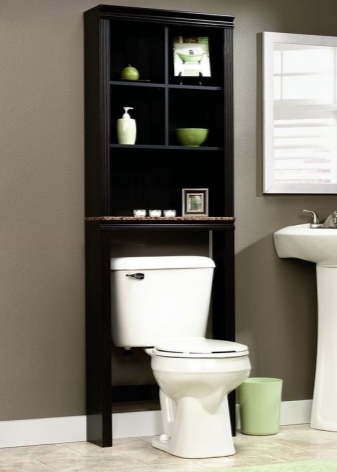
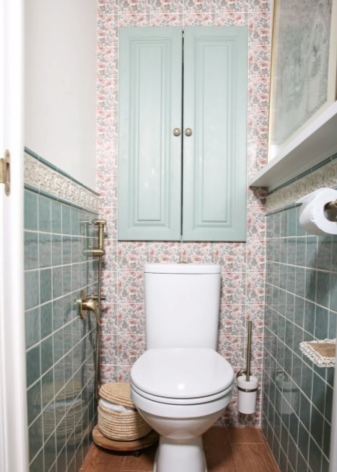
Louvered doors
There are two types: roller shutters and pseudo-blinds. The first is more preferable when there is no opportunity to open the door. The second option is made in the form of blinds, but there are no moving objects, such doors are good with poor ventilation.
Pros:
- low cost;
- the door, as a rule, is installed over the opening, easily hiding inaccuracies in dimensions;
- installation of such a door is not complicated, there is no need for special skills.
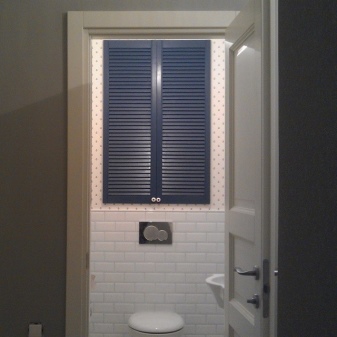
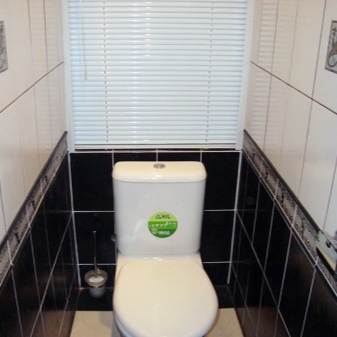
Minuses:
- it is necessary to choose in the same style with the bathroom / bathroom, which is not always possible;
- often this design looks inharmonious on the tile;
- if you close a sanitary cabinet with such a door, problems may arise in the future: in particular, the doors are designed for a small opening, and in the event of emergency pipes and the need for replacement, difficulties will arise due to the small size of the cabinet.
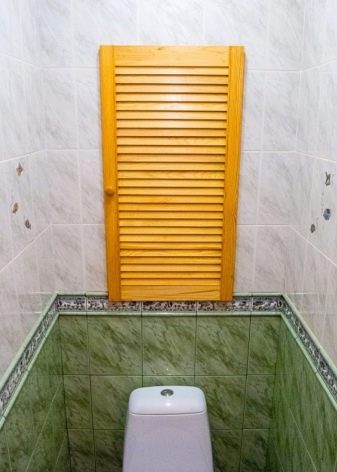
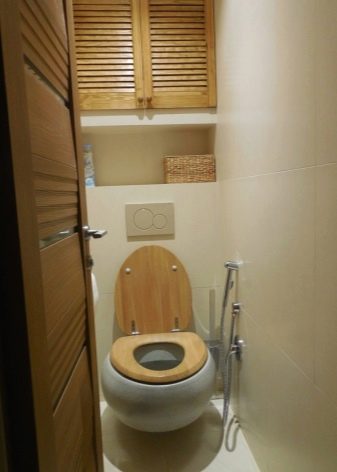
Plumbing plastic hatch
From the name itself, it is clear for which type of cabinet this type of door is preferable.
Pros:
- available in a variety of sizes, which provides a large selection;
- the ability to choose the door for your data;
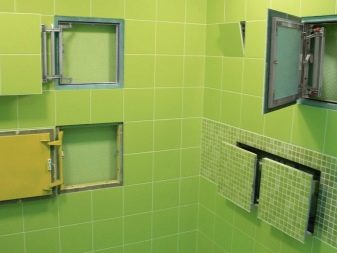

- the cabinet turns out to be quite spacious, with the ability to install shelves and store necessary things;
- there are no borders in the color scheme, but more often the plumbing hatch is presented in the "universal" white color;
- easy to install: after finishing the tiling work in the bathroom / bathroom, the hatch frame is glued into place with a sealant or any other means for fastening.
Minuses:
- there are no significant disadvantages for plumbing plastic hatches.
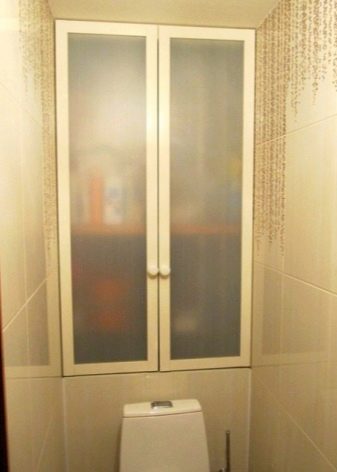
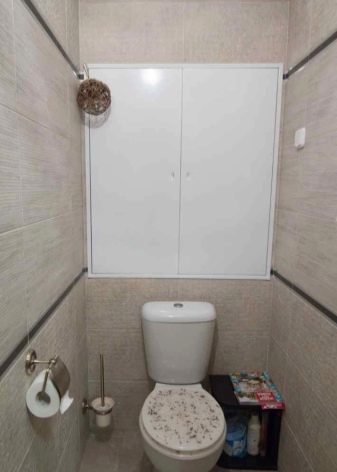
Doors to order
It is worth considering this option when the area of the room allows you to open them completely.
Pros:
- the ability to choose according to your own sizes;
- a large selection of design works.
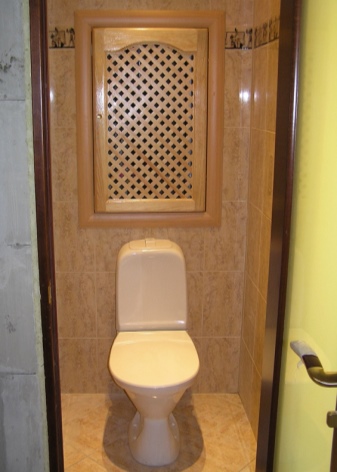
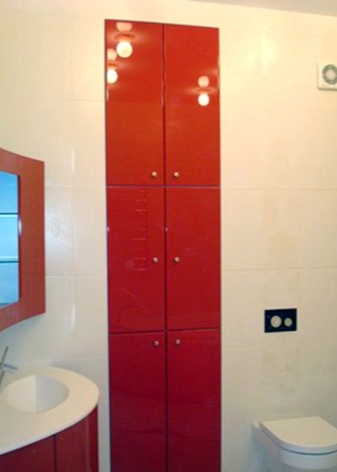
Minuses:
- this design will be expensive;
- it is necessary to wait a long time until your order is made;
- have to look for a good master.
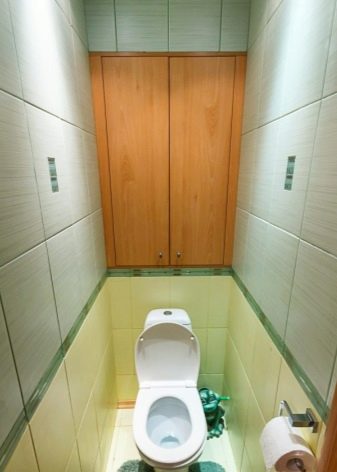

Sanitary hatch for tiles
This type of door from all of the above will be the most expensive, but ideally suited to the design of a bathroom / bathroom. The main requirement for this structure is a reliable frame that can withstand the glued tiles. For the harmony of the style, it is advisable to select the dimensions of the cabinet, based on the size of the tiles, so that during installation the plumbing hatch coincides with the tile joints.
Pros:
- fairly easy access inside the locker;
- stealth (this will be especially interesting if you are a perfectionist);
- all kinds of sizes (but remember the size of the tile itself).
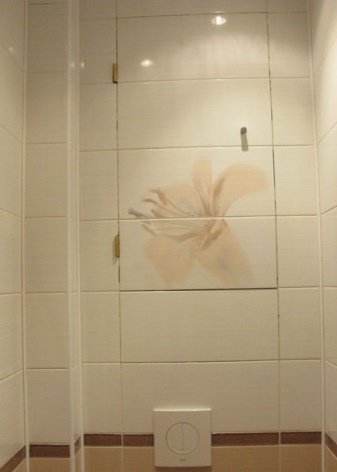

Minuses:
- if the budget is limited or you want to save money, it is better to choose another option;
- you will need the help of a tiling master.
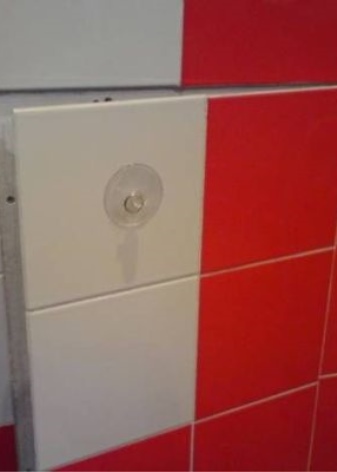

Full height wooden cabinet
If you want to add rigor to your design, you can apply this type of cabinet.
Pros:
- if necessary, you can quickly disassemble the locker and assemble it;
- this design provides maximum access to plumbing pipes, which we are trying to hide so beautifully;
- quite an economical option.
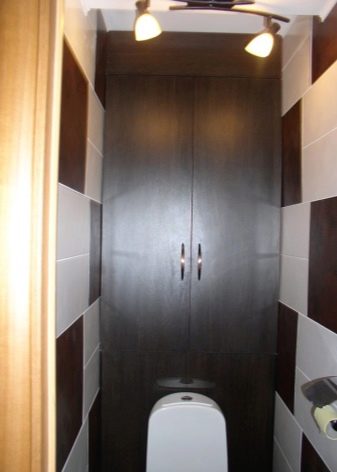
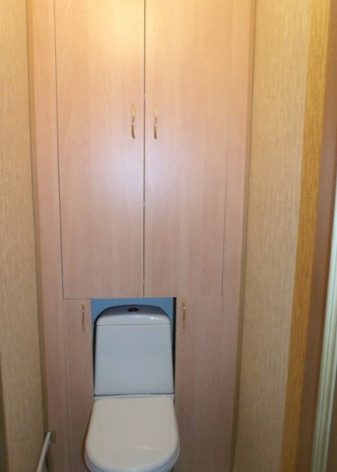
Minuses:
- not everyone likes a wooden cabinet;
- for the manufacture of parts and installation of the cabinet at home, you must have knowledge in the field of carpentry.
The doors can also be divided according to the opening mechanism:
- sliding, like wardrobes;
- folding;
- swing;
- roller shutters.
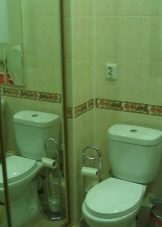

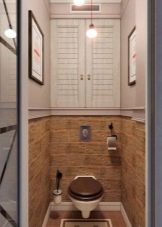

The main advantages of lockers behind the toilet:
- saving space (especially important for a small area);
- the ability to independently make;
- fit the size perfectly;
- small costs;
- the ability to hide communications;
- additional space is created for storing household chemicals and other.
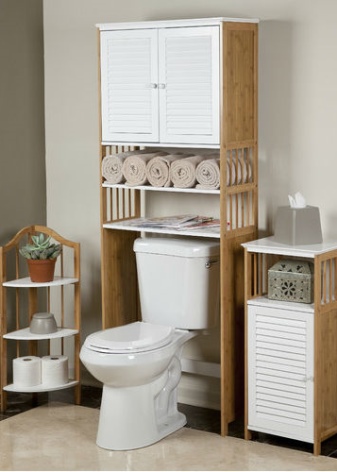
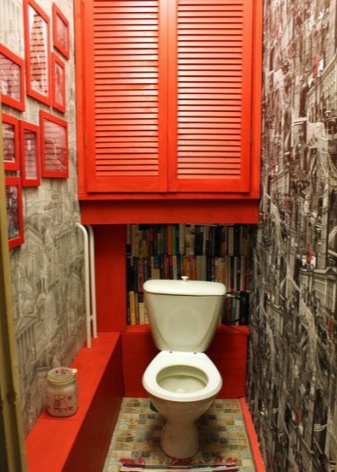
How to do it yourself?
The need to make a cabinet with your own hands appears when it is not possible to buy a built-in cabinet inexpensively, and the lack of a standard for the location of pipes and connection to communications makes this choice difficult.
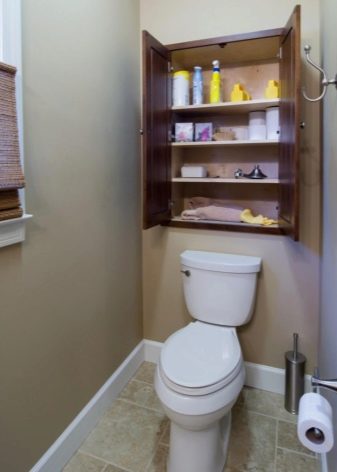
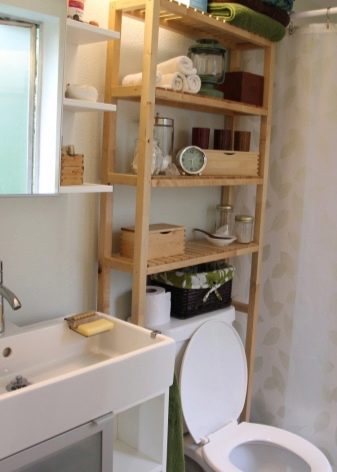
Materials and tools
The main requirement for materials is moisture resistance, since even with good ventilation, there is high humidity in the toilet / bathroom.
For the structure of the frame, the following options are most acceptable:
- plastic;
- film faced plywood and chipboard;
- MDF boards;

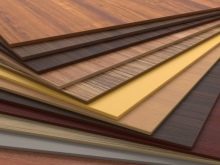
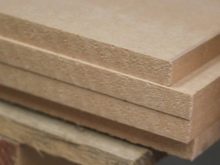
- wood, which is covered with stain and two layers of varnish;
- galvanized and aluminum profile;
- tempered transparent colored and frosted glass tinted as a whole.
If the area even limits the possibility of using swing doors, it is possible to install blinds or roller shutters.
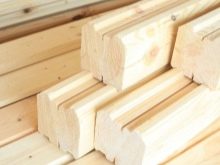


Instruments:
- a pencil for the necessary markings;
- tape measure for measuring all the details of the cabinet;
- level;
- drill;
- screwdriver.
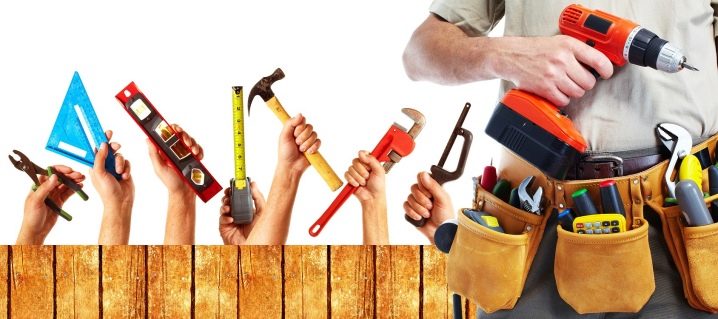
Fittings:
- hinges - should be made of stainless alloys, which are less susceptible to corrosion;
- closers - if an option with a hinged door is being considered, to keep it in this position and smoothly close;
- if your choice fell on roller shutters, then you should pay attention to the box, it is better if it is hidden inside the cabinet, this will give an aesthetic look to the future cabinet;
- when choosing a secret hatch, you can choose any mechanism that seems most acceptable;
- for a snug fit of the door to the frame, you can use furniture magnets.
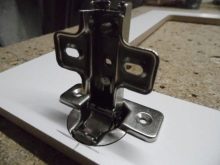
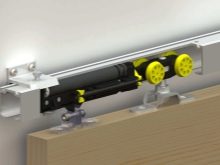
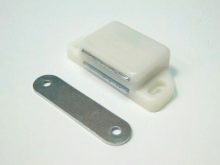
Mounting
At the first stage of planning a locker at home, it is necessary to make a preliminary draft of the future design. Initially, it is worth deciding on the type of cabinet, whether it will be hinged or built-in, then with the dimensions of the structure itself, and if there are shelves in it, determine the distance between them.
The standard distance is recommended 25-35 cm, but it is worth choosing individually at your discretion.
- After choosing a model, when all the necessary materials have been purchased, it is necessary to build a frame for the future cabinet.
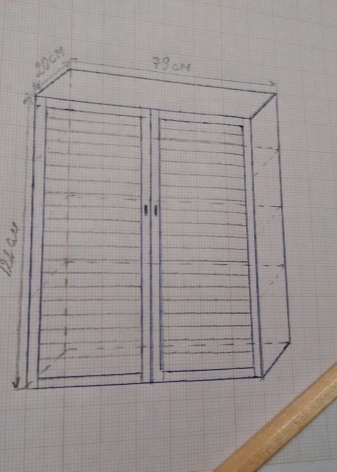
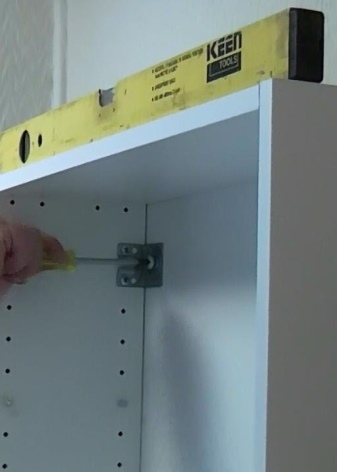
- If the size of the cabinet allows, then you can install shelves inside, attached to pre-prepared corners / beams. The type of shelves is selected according to the expected weight so that they do not bend. And also they should not come into contact with pipes and not interfere with free access to communications.
- And at the end of the installation, we install the facade.
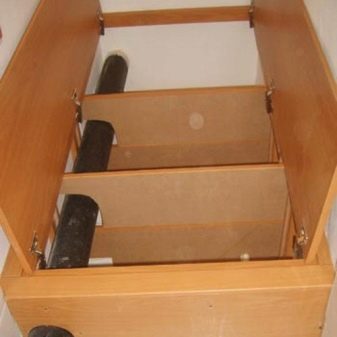
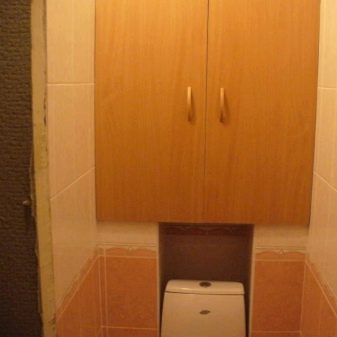
Helpful hints
The recommendations of experts will help you make the right locker in the toilet.
- To save space in the bathroom / wc, a structure with a minimum depth is required.
- For a long service life, the installation must be moisture-proof, high strength, minimally changeable under the influence of mechanical and physical environmental factors.
- The locker should not block access to pipelines, boiler, risers, communications.
- To remove excess moisture (which is more often observed in these rooms), it is better to install a ventilation grill above the cabinet, which will ensure a long service life of the structure, this is especially important if it is made of a moisture-permeable material.

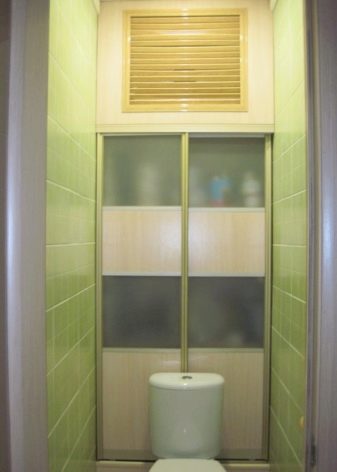
Beautiful examples
Your locker can be anything, in any style, from minimalism in design (monochromatic) to a variety of ornaments (flowers, animals, lines, shapes, and so on). The choice is only yours. If it is difficult to decide, or there is a desire to do something unusual, you can use the table for the combination of colors. You can move away from the usual blue color scheme, which is so often used in the interior of bathrooms / toilets.
Do not be afraid to experiment, you can use a cabinet to accentuate your room if you use decorative details.
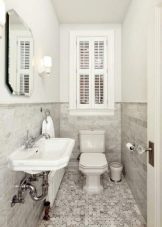
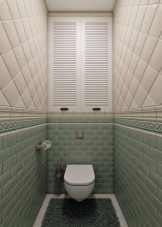
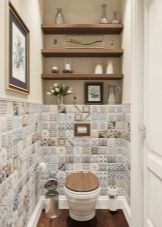
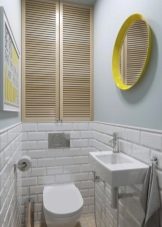
For information on how to mount a closet in the toilet, see the next video.













The comment was sent successfully.